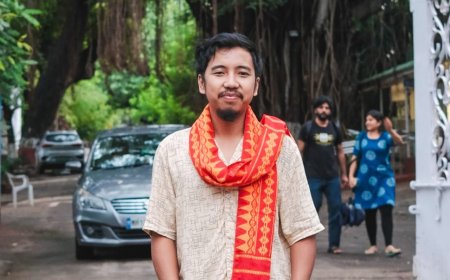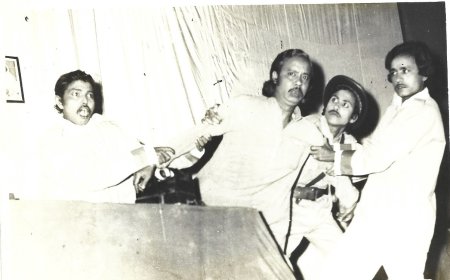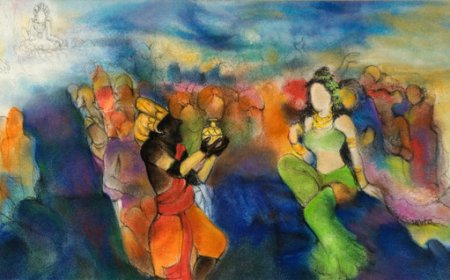INTERVIEW: LALIT MOHAN JOSHI’S DOCUMENTARY ANGWAL
Dr. Shoma A. Chatterji engages in a thought-provoking dialogue with the esteemed filmmaker Lalit Mohan Joshi.
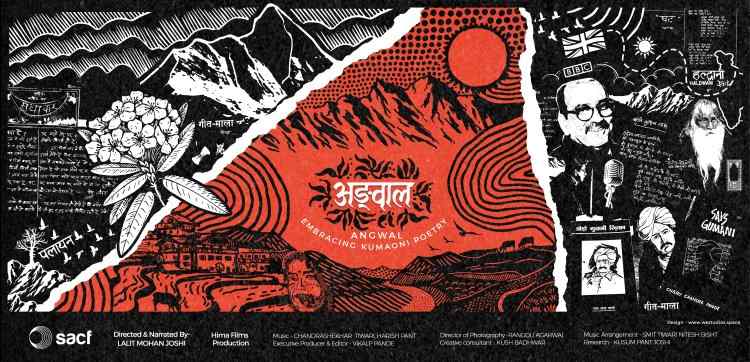
Meet Lalit Mohan Joshi. He is a London based editor and film historian who heads the South Asian Cinema Foundation. He is passionately fond of cinema in general and Indian cinema in particular and keeps functioning towards its promotion in London. In 2006, his earlier documentary, Beyond Partition, marked Joshi’s debut into filmmaking. It was screened widely across the UK and India. The film spanned a very wide expanse of Partiton films ranging from the first Partition Film Chhinnamool directed by Nimai Ghosh through Gandhi, Tamas, Khandan, Pinjar, Megha Dhaka Tara and many more. The film drew very positive reviews in the media.
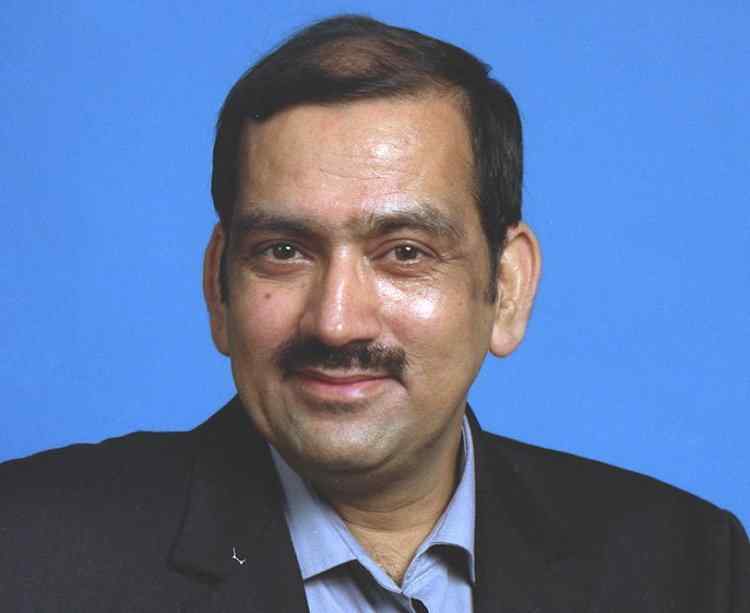
Image: Lalit Mohan Joshi
More than 15 years later, he has made a glorious comeback with his new film Angwal, a long-form documentary that took him back to his boyhood spent within the glorious expanse of his home state, Uttaranchal and right into Kumaon. The people of Kumaon are known as Kumaonis and speak the Kumaoni language. Kumaon is home to a famous Indian Army regiment, the Kumaon Regiment. The hill town Nainital is its administrative centre and this is where the Uttarakhand high court is located. Other notable hill towns of Kumaon are Almora, Ranikhet, Pithoragarh, Champawat and Bageshwar. However, all the major cities of the region like Ramnagar, Haldwani, Rudrapur, Kashipur and Tanakpuri are concentrated in the southern plain areas of Bhabar and Terai.
To the rest of India, except tourists, historians and language scholars, the culture, language, literature, food habits, flora and fauna, water bodies and lifestyle of the Kumaonis remain an intriguing and unknown chapter till today. Joshi’s film Angwal sheds enriching light on this unknown or little-known slice of our own motherland. Joshi offers an answer to every question in a detailed interview with this author.
What does the title Angwal mean?
It is a Kumaoni word which means to embrace or hugging someone with love, warmth and affection. I thought the word defined the spirit and sentiment of my film. The film is about my return to my roots. Angwal is also the name of an anthology of poems by Kumaoni poet Charu Chandra Pande, who has been profiled in this film. It struck me and I decided to make it the title of my film. I lived for 6 -7 years in my ancestral house in Naukuchiatal (village Shilauti) where I have shot the film. Being a government officer, my father had a transferable job and I had to move out of my native place for my schooling and higher education in Lucknow and later Allahabad; but I always missed my hills. After I joined the BBC London, the distance increased manifold. The thought and pain stayed with me. It irked me that I had abandoned the village that had sustained my family and me. I even missed the fresh breeze of the hills thathad nurtured me. I shot it in 2019. Then Covid arrived suddenly and a vacuum followed. I took up my dormant film finally in early 2022 and completed it in mid-2023.
What is your directorial statement on the film?
Angwal is the story of longing for one’s native place. It is semi-autobiographical. It starts with the filmmaker’s search for his poetic roots. Two of his maternal uncles were Kumaoni poets. After more than three decades the filmmaker is returning to his birthplace in the Himalayas. But the exploration of the tradition of Kumaoni poetry broadens. The period covered, stretches from the era of British occupation through to the present. Combining the spoken word with music that typifies the region, the film captures the responses and deep philosophical worldview of some representative poets in the face of a society undergoing profound change.
What was the inspiration?
The inspiration came from within. It came from the realization that natives have abandoned the Kumaon region for earning their livelihood and in search of money and education.
Who produced the film and how much did it cost?
The film has been produced by the filmmaker with contributions from Deepak Joshi and the South Asian Cinema Foundation London.
What are you thinking about distributing and exhibiting the film?
I first intend to send the film to festival circuits to international film festivals and Indian film festivals. And then approach Netflix and other TV channels.
You have lived in England for several decades now. Then why do you feel this strong pull to your birthplace and the place where you grew up?
Though I came to the UK with my wife soon after my marriage in 1988 on a short-term contract, it got extended and we stayed on. My contact with the hills, however, continued as we visited home almost every year. Moreover, the hills and mountains in the midst of which I had spent my childhood, seem to haunt me and kept beckoning me. It was perhaps this attachment and powerful attraction that made us buy a little cottage in the hills. This little haven gave and continues to give us immense peace and happiness. Yet, both my wife and I felt we should go back to our roots, do something worthwhile to raise awareness about Kumaon and its beauty, make us all proud about its history and culture as well as to try to explore if we could do something positive for its future.
I realized the rich heritage of my family. From my father’s side, we had a long tradition of astrology. The almanac produced by my family is perhaps the one most widely used in Kumaon. On my mother’s side, there was another tradition - the serious study and pursuit of Ayurveda. Highly educated and enterprising, they had also set up a printing press, the Anglo-Vernacular Press in Ranikhet. It is reckoned to be the first in the area that regularly printed material for the British Indian Army with branches in Nainital, Lucknow and Dehradun. I had heard of the literary writings and poetry of my maternal uncles. I felt I owed it to my family to highlight their work. I began with their poetry and then branched out into other poets. This took me to the natural beauty of Kumaon. It also took me to the issues and themes that had and continue to affect the poets of Kumaon.
Nature, the flora and fauna, the trees and the natural environs enrich not only the film but also the subject. These are the unique characteristics of Kumaon. What about its music, dance and so on?
Kumaon’s music and dance have a distinct identity. We have some musical instruments such as the hudka and … that are typical of the area. Being a hilly and mountainous area, it is believed that its music has some qualities that are akin to the music of other hilly and mountainous parts of the world. Eager to give my film a distinct Kumaoni stamp, I made sure I used skilled musicians and music makers from my region.
Which are the places you shot the film in and how long did it take for you from concept to final edit?
Towns and urban centres: Ranikhet, Almora, Nainital. Himalayan Foothills: Haldwani. Rural areas: Villages of: Malaunj, Shilauti, Sheetalakhet, Kausani (place of Sumitranandan Pant famous Hindi poet and Kasoon.
BOX
NAMES AND SPECIALITIES OF POETS INTERVIEWED
1. Diwakar Pant, grandson of Shyamacharandutt Pant, an iconic Kumaoni Poet,
2. Saroj Pant, daughter in law of Shyamacharandutt Pant (maternal uncle of filmmaker)
3. Vinata Pande, daughter of Poet Ramdutt Pant (maternal uncle of filmmaker)
4. Shekhar Pathak, Historian, Editor and publisher Pahar
5. Vasudha Pande, Researcher and Expert in Kumaoni Culture
6. Manjul Kumar Pande, retired Army Officer and son of Kumaoni poet Charu Chandra Pande,
7. Prabhu Pande, grandson of poet Charu Chandra Pande,
8. Tribhuwan Giri, a sage like figure and an eminent Kumaoni poet,
9. Dr Mrs Diva Bhatt, University of Kumaon. A poetess based in Almora,
10. Dr Dev Singh Pokharia, University of Kumaon and a Kumaoni poet.
What's Your Reaction?




































